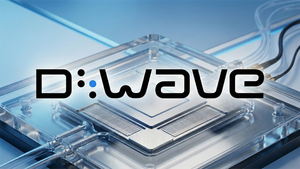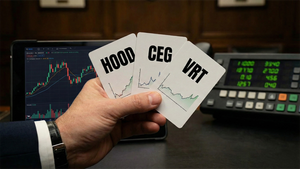 Photo from Unsplash
Photo from Unsplash
Originally Posted On: https://uiuxb.com/blog/key-differences-between-a-product-designer-vs-ux-designer/
If you’re the Chief Technology Officer of a small SaaS business or the CEO of a fast-growing startup, it pays to invest in these two roles. But when it comes to a product designer vs. UX designer, what’s the difference? How do you know which you need?
Here are some of the key differences between a product designer and a UX designer to help orientate yourself and your team for your next hire or freelance project.
What Is a UX Designer?
A UX designer is someone who designs user experiences. They take into account how users interact with a product, what their needs are, and how to make the experience as user-friendly as possible.
A lot of times, they work closely with product teams to make sure that the experience they’re designing is in line with the product’s goals. Because of this, UX designers need to have a strong understanding of psychology, human behavior, and technology.
They also need to be able to think creatively and come up with innovative solutions to problems. The job can be challenging, but it’s also extremely rewarding for most designers. However, we believe that when you work with a great UX designer, this spills over into your company too.
Seeing people use the products your company has designed and knowing that you’ve made their lives better is an incredible feeling.
What Skills Does a UX Designer Need?
As mentioned, a UX designer is responsible for creating user-friendly designs for websites and apps.
This ultimately means that they need to have a strong understanding of how users interact with technology and are able to create designs that are both aesthetically pleasing and functional.
In addition, UX designers need to be good at problem-solving, as they often have to find creative solutions to complex design challenges. As user experience becomes increasingly important in the world of tech, UX designers will only become more in demand.
Those who have the skills and drive to succeed in this field will find themselves in high demand by employers. For example, the designers we offer startups and software firms the chance to work with a designer that has over twenty years of experience doing just this.
Having worked with both startups and enterprise companies, we are knowledgeable in creating engaging products and enhancing the value of your business.
Any great UX designer you work with should be able to do just the same.
How Much Does a UX Designer Cost?
Before we dive into talking about the costs of hiring a UX designer (or a product designer for that matter), it’s important to think back to the statistic we cited at the beginning. Over half of consumers want to be wowed when they interact with an app or website.
If over half of your customers are dying for this experience, then you should be willing and ready to invest in that. So, when thinking about how much a UX designer costs to hire, consider the overall impact their services will have on your projects.
Now, about the costs!
There is no one-size-fits-all answer to this question, as the price will vary depending on factors such as the size and complexity of your project, the experience of the designer, and the location of the team.
However, as a general guide, you can expect to pay between $50 and $250 per hour for UX design services. As an alternative, some agencies offer simplified pricing that allows you to pay a flat monthly fee for unlimited, custom designs.
Learn more about that simplified pricing here.
What Is the Training Required for a UX Designer?
UX designers are responsible for creating user-friendly, efficient, and visually appealing designs for websites and apps. Because they bridge the gap between users and developers, they must have a strong understanding of both design and technology.
While there is no one-size-fits-all approach to becoming a UX designer, there are some common routes that many take.
Many UX designers start out as web or graphic designers. This gives them a solid foundation in design principles, which they can then build upon with specific UX courses or programs.
There are also many boot camps and online programs that offer intensive UX training. These programs typically last around 10 weeks and cover everything from user research to interface design.
However, the route to becoming a UX designer doesn’t stop there. After their basic training, they have to build a portfolio and then will typically go on to work for large interactive agencies where they hone their craft.
They work with client after client and build up their experience. This is where the fees for a UX designer start to come into play. There are hours and hours of training and expertise behind each dollar charged.
What Is a Product Designer?
Now, what is a product designer, you ask?
A product designer is responsible for the overall look and feel of a product, from its initial concept to its eventual production. They work closely with engineers and other team members to ensure that the product meets all required specifications and functions as intended.
A successful product designer must have strong creative skills and be able to think outside the box to come up with innovative solutions. They must also be able to clearly communicate their ideas to others and work well within a team.
With the ever-changing landscape of technology, a product designer must be adaptable and always willing to learn new skills. However, we find that to be pretty standard for any role in tech these days.
What Skills Does a Product Designer Need?
First and foremost, they need to have a strong understanding of design principles and how to apply them to create aesthetically pleasing products.
They also need to be able to think creatively and come up with innovative solutions to problems. Additionally, they need strong engineering skills to create products that are not only aesthetically pleasing but also functional and safe.
Finally, they need good communication skills to be able to effectively collaborate with other members of the product development team. By possessing all of these skills, a product designer can create products that are both beautiful and functional.
And, as an added note, you should never hire a product designer who doesn’t possess these qualities.
How Much Does a Product Designer Cost?
It’s a common misconception that product designers are more expensive than UX designers. In reality, the cost of hiring a product designer depends on a number of factors, including the designer’s experience, portfolio, and location.
While it’s true that some product designers may charge more than UX designers, this is not always the case. In fact, many product designers are willing to negotiate their rates in order to land the job.
Ultimately, the cost of hiring a product designer should be evaluated on a case-by-case basis. We suggest speaking with an expert to see if product design is really what your team needs to be focusing on.
Generally speaking, however, most designers will charge an hourly rate for their services. For a simple project, such as designing a logo or a website, the designer’s fee may be around $50-$100 per hour.
For more complex projects, such as developing a new product, the fee may be closer to $100-$200 per hour.
Of course, the final cost will also depend on how many hours the designer needs to complete the project. As such, it is important to get an estimate from the designer before starting work. By doing so, you can ensure that the project stays within your budget.
What Is the Training Required for a Product Designer?
Product designers are responsible for creating the products that we use every day, from phones to coffee makers. As such, they need to have a strong understanding of both design and engineering.
Most product designers have at least a bachelor’s degree in industrial design or a related field. In addition, many product designers also get a master’s degree or take courses in human factors or ergonomics.
In terms of specific skills, product designers need to be proficient in CAD (computer-aided design) software and have experience with prototyping and manufacturing processes.
They also need to be able to effectively communicate their ideas to others, as they will often be working with engineers and marketing teams.
UX Designer vs. Product Designer: The Similarities
UX designers and product designers may seem like two very different roles, but they actually have quite a bit in common. For one thing, both UX and product designers are focused on creating user-friendly experiences.
They work closely with other members of the development team to ensure that the final product is easy to use and meets the needs of the target audience. In addition, both UX and product designers need to have strong problem-solving skills.
They need to be able to identify user pain points and come up with creative solutions that improve the overall experience.
Finally, both UX and product designers must be excellent communicators. They need to be able to clearly explain their ideas to stakeholders and get buy-in for their proposed solutions.
While there are some key differences between UX design and product design, the two disciplines actually have quite a lot in common.
UX Designer vs. Product Designer: The Differences
UX designers and product designers are two very different types of design professionals. UX designers focus on the user experience of a product, while product designers focus on the product itself.
UX designers are concerned with how easy a product is to use, while product designers are concerned with how the product looks and functions.
Additionally, there’s a difference in the core nature of their training and background. UX designers often have a background in psychology or human-computer interaction, while product designers often have a background in industrial design or engineering.
What can you expect when working with a UX designer or product designer?
UX designers typically work closely with developers to ensure that a product is easy to use, while product designers typically work closely with marketing and sales teams to ensure that a product is appealing to customers.
In short, UX designers focus on the usability of a product, while product designers focus on the overall design of a product.
The Responsibilities of a UX Designer vs. Product Designer
For a normal project, a UX designer would be responsible for:
- Conducting user research
- Creating personas and user journeys
- Wireframing and prototyping
- Overseeing user testing.
- Working with cross-functional teams to bring products to market
However, the day-to-day activities of a UX designer can vary depending on the size and team structure of the company. In a small company, for example, a UX designer might wear many hats and be heavily involved in every stage of the product development process.
In a large company, on the other hand, a UX designer might specialize in a particular area (such as user research or usability testing) and work with other designers to complete the final product.
Regardless of the size or structure of the company, a UX designer’s ultimate goal is to create products that are both useful and enjoyable for users.
In comparison, a product designer would be responsible for:
- Coming up with new product ideas
- Researching and planning how to design and make the product
- Designing the look and feel of the product
- Liaising with engineers and manufacturers to make sure the product can be made to the right specification
- Overseeing the production of the product
- Testing prototypes and finished products
In some cases, they might also be responsible for packaging design and marketing. They need to have a good understanding of materials, production processes, and manufacturing constraints in order to make sure their designs can be made cheaply enough to be profitable.
They also need to have an awareness of trends in order to design products that will appeal to customers.
Hire Your Next UX Designer
When it comes to a product designer vs. UX designer, we find that needs vary from one company to the next. However, what we do know is that as the world increasingly moves online, the importance of good user experience (UX) design is only going to grow.
There are numerous benefits to hiring a UX designer. For one, they can help to improve customer satisfaction and loyalty. Good UX design can also lead to increased sales and conversions, as well as decreased customer support costs. In addition, UX designers are often able to spot potential problems before they arise, which can save a lot of time and money in the long run.
If you’re thinking about hiring a UX designer, get in touch. We offer unparalleled UX and UI design services backed by decades of experience. Fill out our inquiry form and we’ll be in touch ASAP!

















